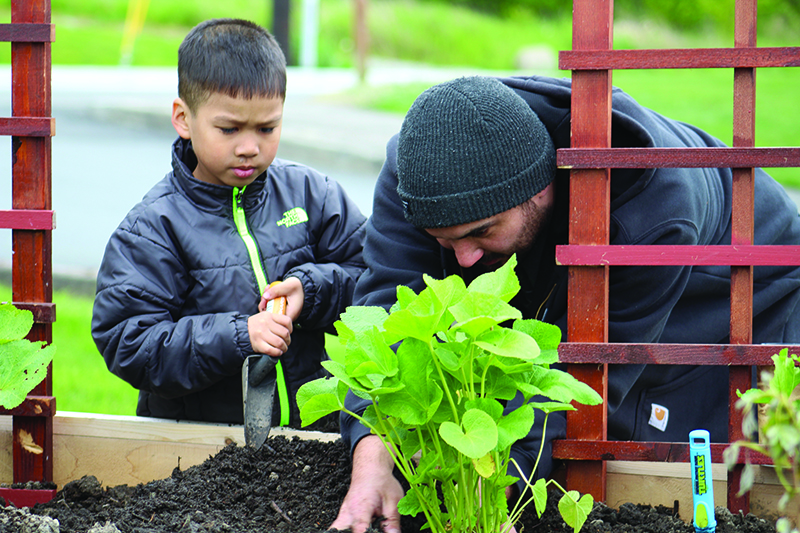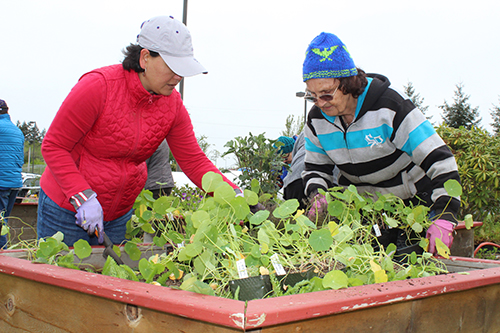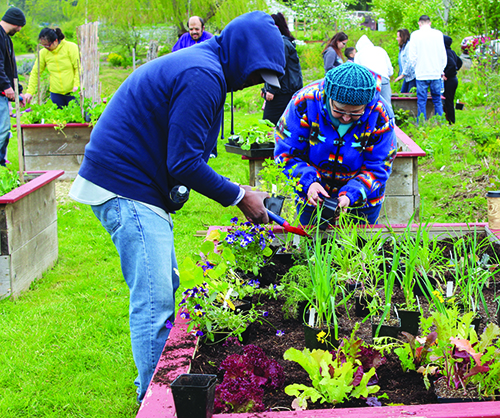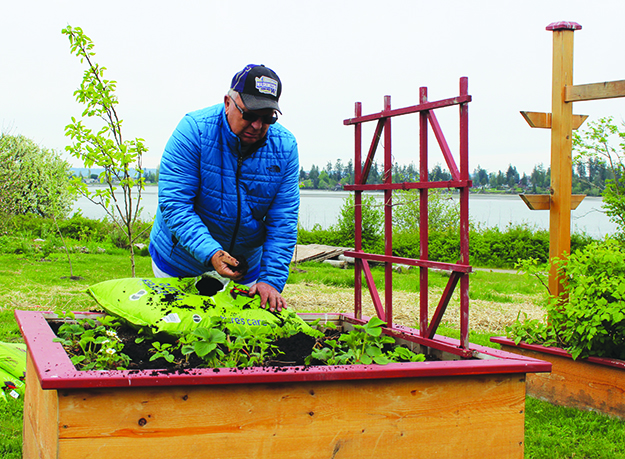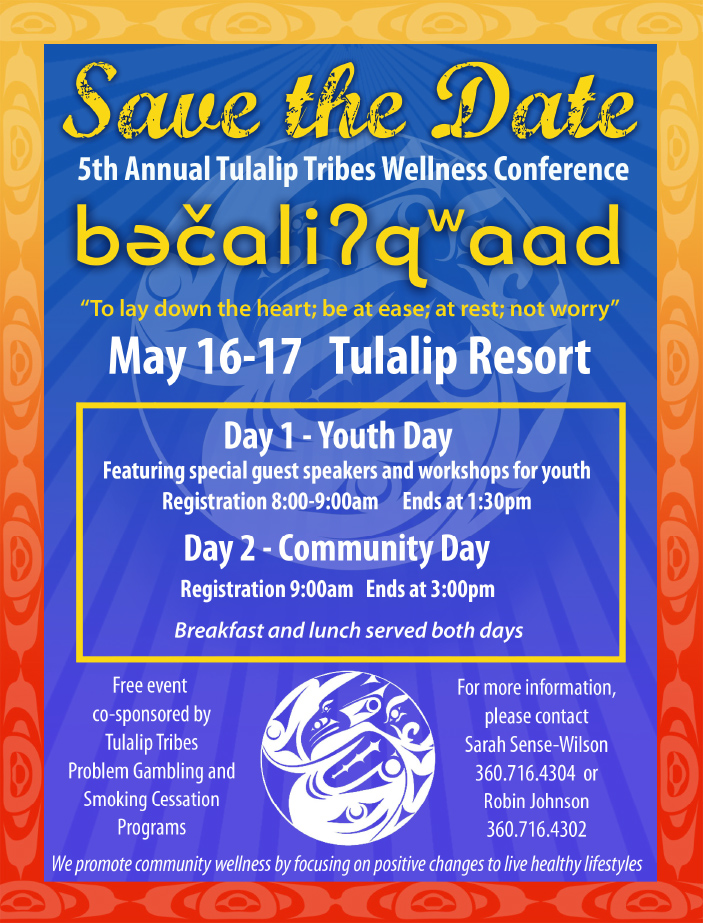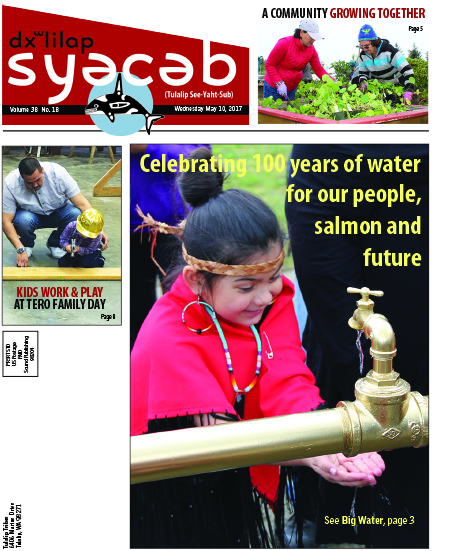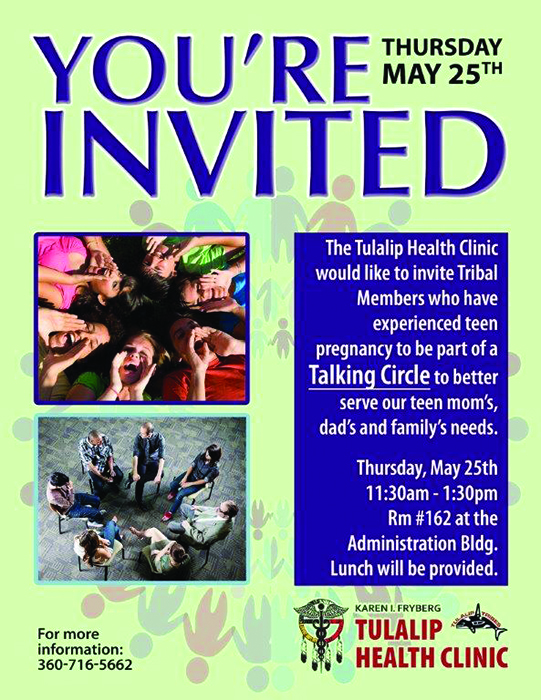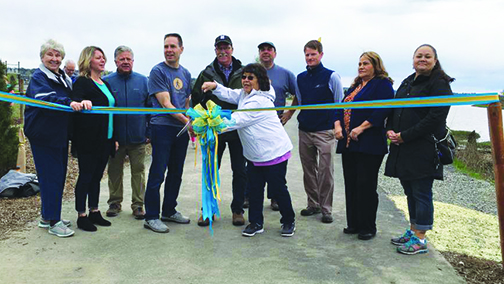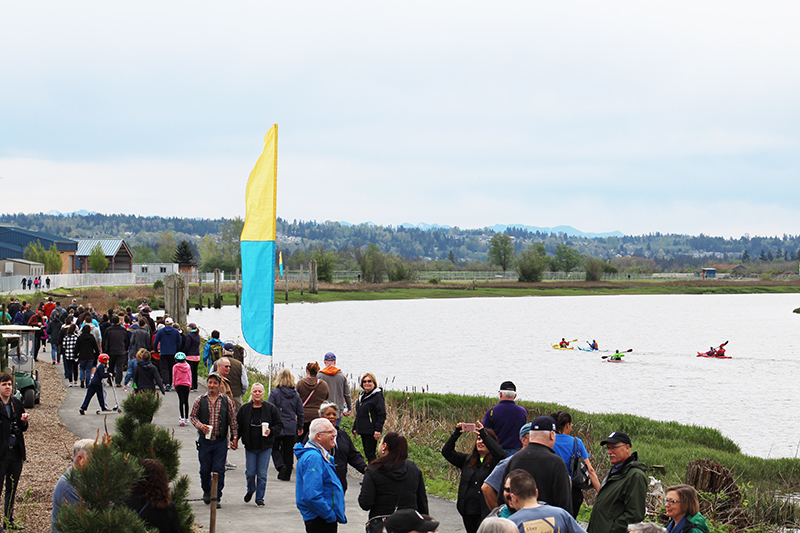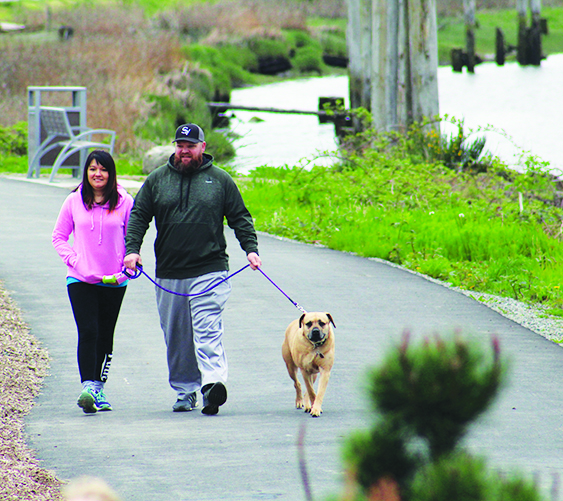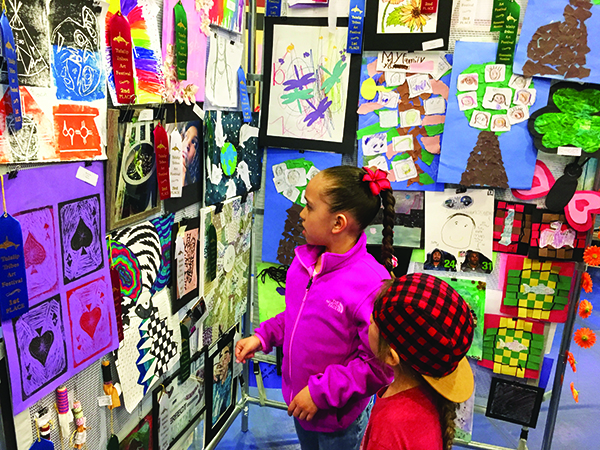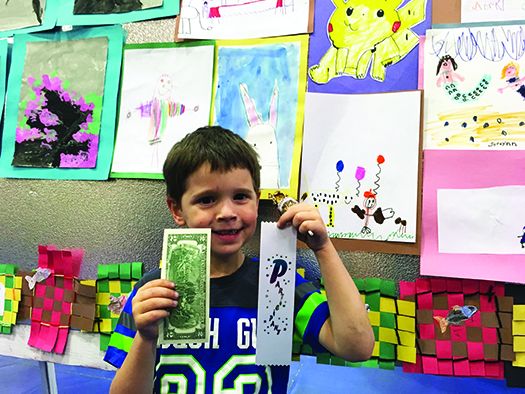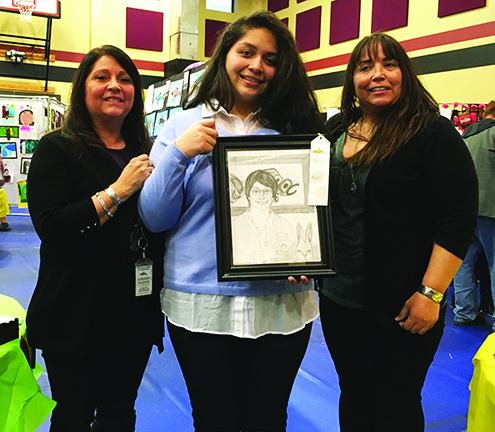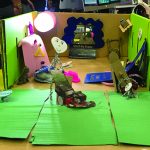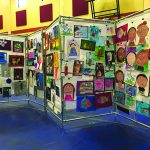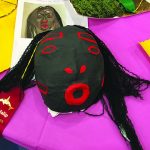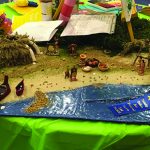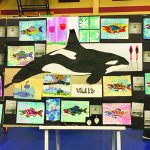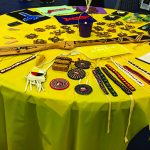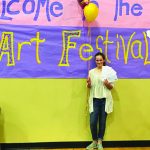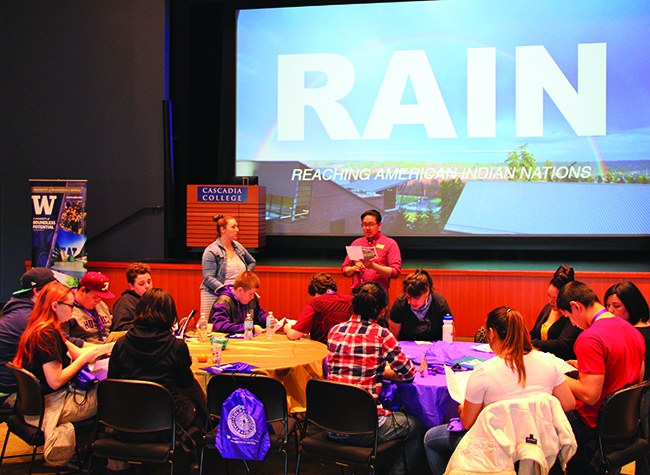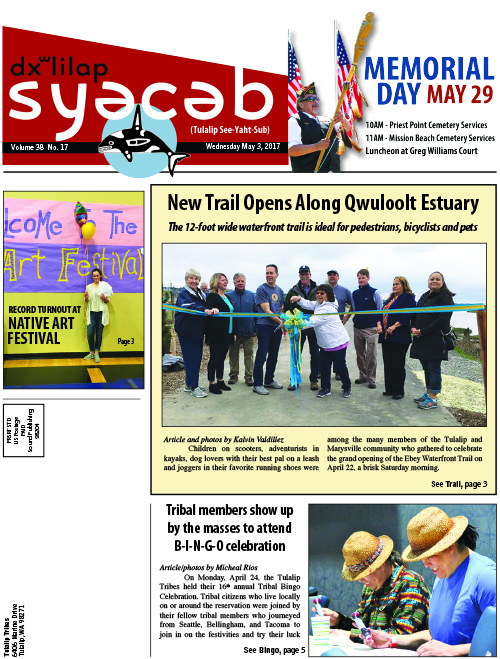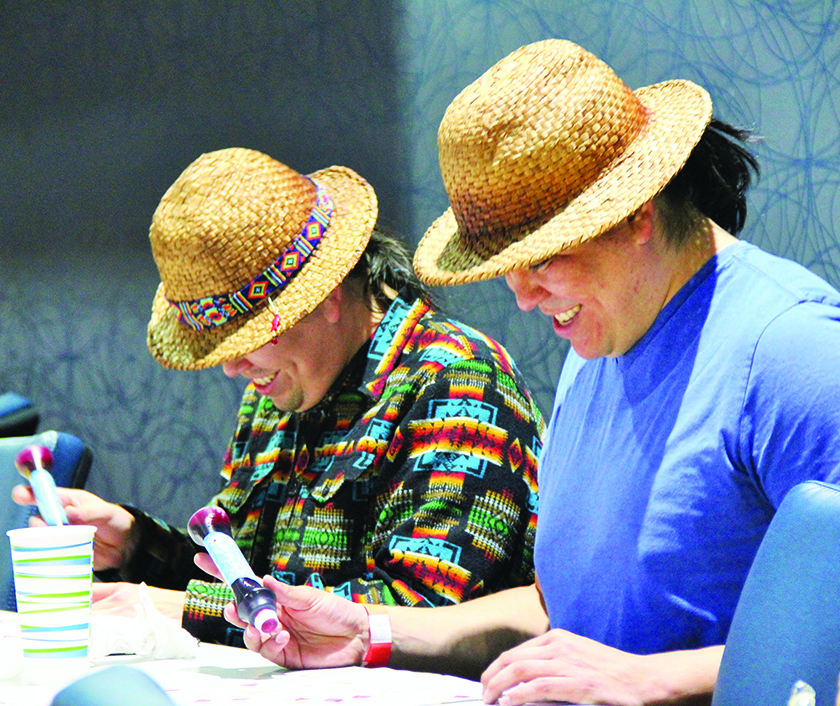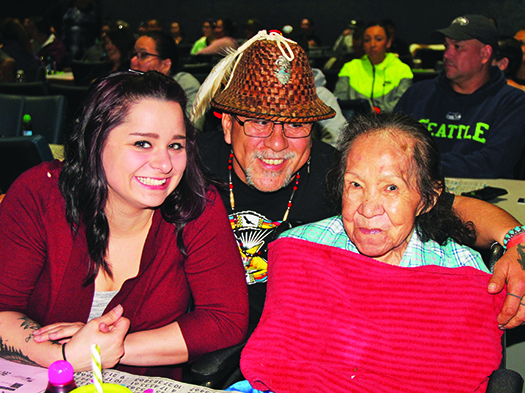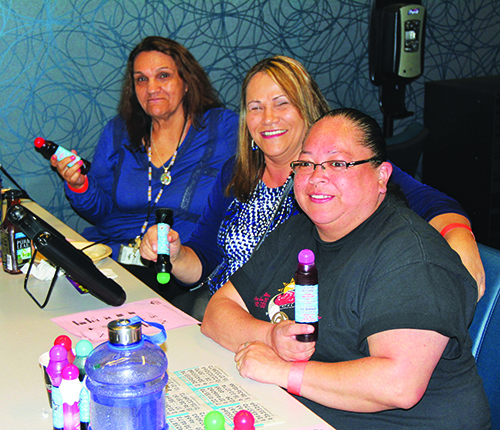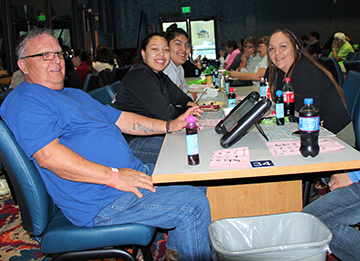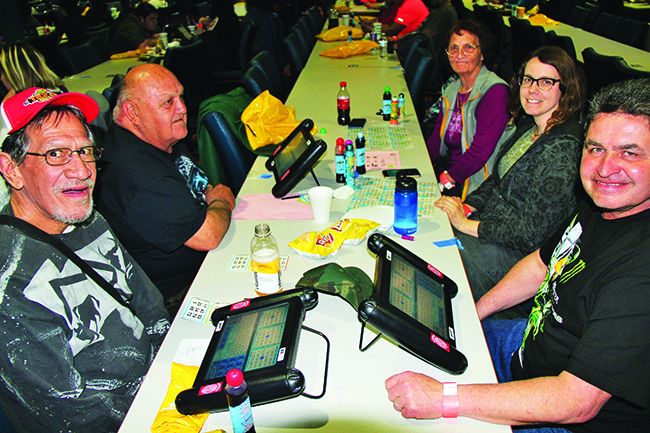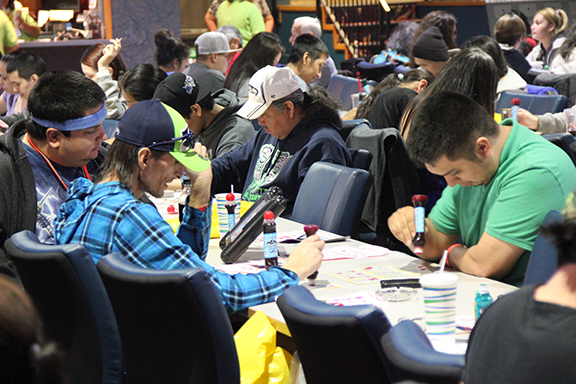By Kalvin Valdillez, Tulalip News
At an amazing vantage point overlooking Tulalip Bay, community members met behind the Karen I Fryberg Health Clinic, on April 29, to attend the first Tulalip Bay Garden and Trail Class of the year. The class is hosted by the Tulalip Diabetes Care and Prevention Program and unites community members, youth to elders, to educate as well as promote both healthy eating and living habits by planting a variety of fruits, vegetables and flowers.
For centuries, Native American ancestors practiced sustainable agriculture as they incorporated the crops into their everyday diet. Due to events such as the Indian Removal Act and Assimilation, many tribal nations lost the tradition of passing down ancestral knowledge, regarding the growth and harvest of produce. This resulted in poor diets in many Native communities as they transitioned to the modern western diet of high saturated fats and empty carbohydrates. This diet often leads to diabetes, a disease that unfortunately continues to spread throughout Native America as studies show Indigenous People are twice as likely to be diagnosed with the disease, as opposed to other cultures.
Since 2014, the Wellness Garden and Trail has been the outdoor homeroom to participants, many of whom faithfully attend the once-a-month classes between April and September. During each class, participants are presented with an opportunity to learn how to grow produce and are treated to a spectacular view of the bay while walking along the trail that connects the garden and the clinic. Dietician Susan Adams spoke to the community about the importance of proper nutrition and this year participants planted apple trees, carrots, onions, lettuce, broccoli, cauliflower, kale, herbs and an assortment of over 14 berries including blueberries and goji berries.
Garden class participants are encouraged to start the day with a good stretch, by means of yoga, in the newly constructed Medicine Wheel Garden. Tulalip community member and Native American Yoga Instructor, Lisa Foster, provides information about the medicine wheel as she guides participants through each pose, making sure to face all four directions through each sequence.
Attendees were treated to a gift box full of fruits and vegetables donated by Klesick Family Farm as well as lunch, prepared during a live cooking demonstration by community member Brit Reed who is currently attending the Seattle Culinary Academy. During the upcoming months of June and July, Brit will offer cooking classes on Mondays at the Kenny Moses Building for the Diabetes Care and Prevention Program.
Dale Jones, Elder Advocate for the diabetes program states, “[The Tulalip Bay Garden and Trail Class] is here to help people eat right, make the right choices for their health and open their eyes to other choices than McDonalds. Teat-mus used to say ‘it’s pretty funny we have a clown that’s killing our people.’ With all the bad choices we make eating, we’re all guilty. But, we can teach our kids to live better lives than us.”
Tulalip tribal member Jose Diaz, who is only ten years of age, offered to perform the opening prayers as well as the meal blessings for each class held in 2017. Upcoming classes will be held on June 16, July 15, August 26 and September 30.
The diabetes program intends to begin weekday classes in the near future, geared towards adults, where attendees will be working exclusively in the Medicine Wheel Garden. The diabetes program also recently purchased the plants for many programs in Tulalip including the Betty J Taylor Early Learning Academy, the Boys and Girls Club, Youth Services as well as the Senior Center as they recently began growing plants and vegetables in their own gardens.
For additional information regarding Tulalip Bay Garden and Trail Classes and the Tulalip Diabetes Care and Program, please contact the Karen I Fryberg Health Clinic at (360) 716-4511.
